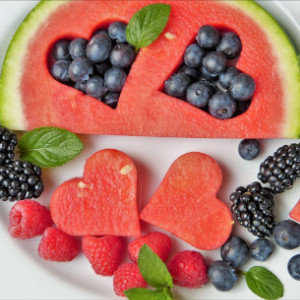In the realm of food, appealing to the senses depends much on colors. Foods’ vivid colors often arouse feelings, boost hunger, and affect buying choices. But when health issues raise questions, consumers and companies both are looking to all-natural food coloring alternatives. Often produced from synthetic sources, traditional artificial colorants have caused concerns about possible harm to health. Consequently, the market for natural substitutes such as food coloring powder suppliers is growing since they provide vivid and safe solutions for culinary arts.
Value of All Natural Food Coloring
Consumer health awareness is one of the main elements influencing the move towards all natural food coloring; others also play roles. Artificial food colors have been linked to health problems, including allergic responses, hyperactivity in kids, and perhaps carcinogens. Many consumers—especially those with dietary restrictions or young children—have been encouraged to look for natural substitutes by this. In addition to giving food vivid and pleasing colors, all-natural food coloring gives peace of mind, knowing the components are safe for eating.
Advantages of Using Natural Food Colors instead of Synthetic Ones
Selecting all-natural food coloring offers several advantages beyond only ones related to health concerns. Many times derived from plant-based sources, such fruits, vegetables, and herbs, natural food colorants are This guarantees that the colors consumed in food are from nature and free from dangerous chemicals in addition to offering a more sustainable choice. Furthermore, natural food coloring allows a more real and creative food presentation since it usually provides more subdued and varied tones than its synthetic equivalents.
Appreciating the Function of Food Coloring Powder Distributors
Achieving the intended outcome for companies and home cooks alike depends on finding the appropriate natural food coloring. From those that create vivid red, yellow, and green colors to more unusual choices like purple and blue, food coloring powder manufacturers provide a large spectrum of items. Working directly with manufacturers, these vendors make sure the natural food colorants they offer satisfy industry standards and laws. Selecting the correct supplier helps businesses make sure they are offering their consumers premium, safe, aesthetically pleasing food goods.
The Making of All Natural Food Colors
All-natural food coloring comes from plant-based sources, unlike synthetic chemicals used in laboratories to generate artificial food colors. Natural colorants come from beets, spinach, turmeric, spirulina, and other fruits and vegetables. These thoroughly refined components release their vivid pigments, which are subsequently used as food coloring additives. Generally speaking, natural colorants, especially for people with allergies or sensitivity to synthetic dyes, are safer and healthier for eating since they are sourced from food sources.
The Rising Culinary Industry Trend: Natural Colors
All-natural food coloring is fast becoming the accepted norm in the culinary arts. Natural food coloring is becoming a widespread choice, from beverage businesses producing vibrant drinks to bakeries building colorful cakes and cookies. Apart from being more environmentally friendly for use, natural colorants provide companies trying to stand out in a competitive market with a special selling feature. Products created with natural, plant-based components can attract consumers seeking better options as well as those who are environmentally sensitive.
Problems Using All Natural Food Coloring
Although employing natural food colorants has certain difficulties, its advantages are obvious. Sometimes, natural colorants yield less strong hues than synthetic dyes, which might make getting the intended color more challenging. Natural food colorants also could change in hue depending on seasonality and source. This implies that depending on when the coloring agent is obtained, the same one may have varied effects. With knowledge and careful sourcing, though, these obstacles can be surmounted.
Future of All Natural Food Coloring on the Market
All-natural food coloring seems to have a bright future. The natural colorants industry is likely to expand as consumers keep seeking better, more environmentally friendly food products. Natural food colorants are probably driven by developments in food technology and the increasing popularity of plant-based diets as well. Options will keep growing as more vendors join the market, providing home cooks and food producers with a broader spectrum of colors to pick from.
Conclusion:
Businesses and consumers are looking to all-natural food coloring to satisfy their demands as demand for better food options increases. Finding safe, vivid, and sustainable solutions for all kinds of culinary uses is now simpler than it has ever been, thanks to the emergence of food coloring powder providers focused on natural colors. Offering top-quality products that can improve the appeal and safety of food, companies like FoodRGB Inc. are working to make these colorants more available to everyone. Choosing natural food coloring helps people and companies to have peace of mind knowing they are utilizing safe, efficient, and environmentally responsible solutions in their food making.

